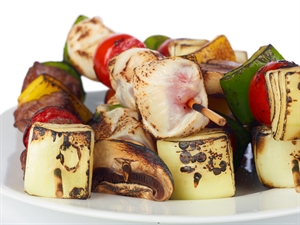Travellers’ diarrhea is a rite of passage for anyone on a longer trip abroad. Gastro-intestinal upsets occur particularly during the first week of travel as your body adapts to a new diet and a new routine and gets to know the local microorganisms. Most cases of travellers’ diarrhea clear up without treatment.
Having said that, you should be aware of some more serious food-borne infections, including campylobacteriosis, dysentery (shigella) and listeriosis and norovirus. Typhoid and hepatitis A and E can also be contracted from food.
The symptoms of GI illnesses include diarrhea and vomiting as well as painful stomach cramps. These can be distressing to deal with while away from home and will make it hard for you to get the most out of your travels. Some, such as typhoid and listeriosis, can be serious illnesses or may even be fatal. Luckily, there are some easily acquired habits and simple actions that will help you to avoid food-borne illnesses.
1. Get vaccinated
There are shots for both typhoid and hepatitis A that will help your immune system to fight off these two bugs. To find out whether the typhoid and hepatitis A shots are right for you, make an appointment with one of the nurses at Canadian Travel Clinics. Our expert advisers can also tell you more about eating safely abroad.
2. Watch your personal hygiene
Many of the microorganisms that spread GI illnesses are spread via the fecal-oral route. In layman’s terms, this means they are contracted by accidentally ingesting tiny amounts of an infected person’s poo. Norovirus can be contracted from infected vomit particles. The best way to reduce the likelihood of these infected particles getting anywhere near your mouth is washing your hands thoroughly with soap and water after using the toilet. You should also give your hands a good washing before you eat and before you handle food. The Government of Canada has some advice on handwashing.
3. Go for reliable-looking restaurants
High-end restaurants, in general, are a safer option than less expensive places – but use your best judgment. Look for clean tables and eating spaces and evidence of careful cleaning. Also look for indications that the management and staff take food hygiene seriously, such as food safety ratings, or food safety information posters. You may wish to give your eating utensils a quick clean with an alcohol wipe, or you could bring your own knife, fork, spoon and chopsticks in a cutlery roll. And, as has been mentioned before, wash your hands before you eat.
4. Eat hot, freshly cooked food
Heat kills many microorganisms, so hot, freshly cooked food is always the safest option. Buffets are best avoided, as bacteria such as Listeria may multiply in food that is kept at room temperature, particularly in warmer climates.
5. Cook it, peel it, forget it
The old rule ‘cook it, peel it or forget it’ will be a good friend to you as raw produce is a common source of infection. Veggies may be irrigated with dirty water or grown in soil improved by manure and, unless they are well cooked, could potentially infect you with harmful organisms. Raw vegetables and herbs are best avoided because they cannot be reliably cleaned. You should be safe with fruit that you can peel yourself (that includes tomatoes) – but berries are not considered safe.
6. Be wary about eating…
Think carefully and get local advice before eating seafood. It may be safe at some times of year but not at others.
Unpasteurized dairy should stay off your menu. This includes cheese and ice cream – though you should be safe with dairy produce bought in larger shops.
When you get home
If you develop any worrying GI symptoms within a couple of weeks of your return, speak to your doctor and let them know where you’ve been.

